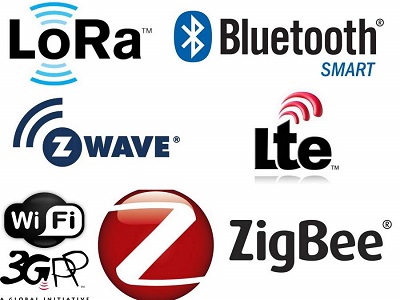Local area networks such as WiFi or Bluetooth are already mature technologies. There are well-established standards for this type of small wireless communication, such as WiFi, Bluetooth 4.0, Zigbee and Z-Wave. But the biggest problem with many LANs/Personal Area Networks are battery consumption.
Similar to wireless networks, cellular networks are also one of the recognized networks. However, fundamentally mobile networks like LTE were developed for data throughput, and these networks are not the best when it comes to power consumption.

Low-power wide-area networks like LoRaWAN, on the other hand, are built from the ground up. LoRa was developed to be used only with IoT devices that require optimal battery life.
Additionally, LoRa type networks are well suited for IoT applications as they require minimal deployment costs.
In comparison, both LAN and cellular networks are very expensive to deploy over wide areas (eg, covering an entire city).
| feature | Wan | narrowband | LTE Cat-1 | LTE Cat-M | Narrowband LTE |
| modulation | SS Chi | UNB/GSK/BPSK | OFDMA | OFDMA | OFDMA |
| Receive bandwidth | 500-125 kHz | 100 Hz | 20MHz | 20-1.4 MHz | 200kHz |
| data rate | 290bps – 50Kbps |
100 bits/second Up to 12/8 bytes |
10Mbps | 200kbps – 1Mbps | 20 Kbps |
| Maximum output power | 20 dBm | 20 dBm | 23 – 46 dBm | 23/30 dBm | 20 dBm |
| Battery life – 2000 mAh | 105 months (~9 years) | 90 months (7.5 years) | 18 months (1.5 years) | ||
| link budget | 154 decibels | 151 decibels | More than 30 decibels | 146 decibels | 150 decibels |
| Safety | yes | No | yes | yes | yes |
The cellular network has the characteristics of wide coverage area, small switching delay, and strong continuity. Currently, more and more mobile terminal data are transmitted through the cellular network, so the load capacity of the cellular network needs to be further improved. The bandwidth and stability of LTE that has been deployed cannot fully meet the growing demand for data transmission. In order to improve data transmission capabilities, operators are committed to researching cellular network link aggregation technology in order to increase cellular network bandwidth. Operators study link aggregation from base stations to the Internet segment. The principle is that in LTE, according to different data services, the internal control plane network elements of the core network select different base stations to transmit data, thus increasing the load capacity of the system. However, mobile terminals cannot directly Improve link bandwidth through the operator’s link aggregation technology.
Keywords: lora